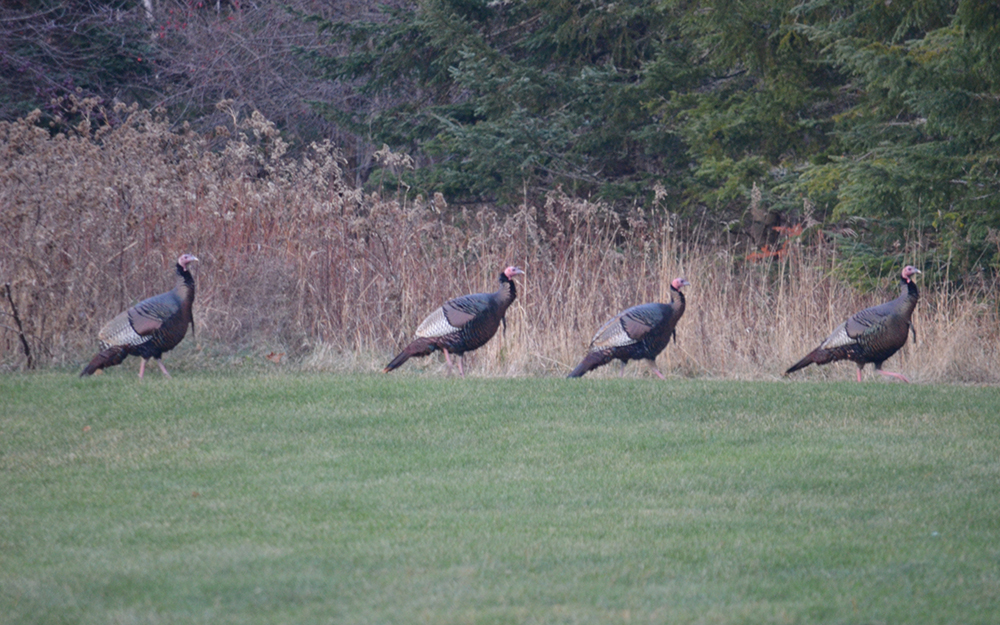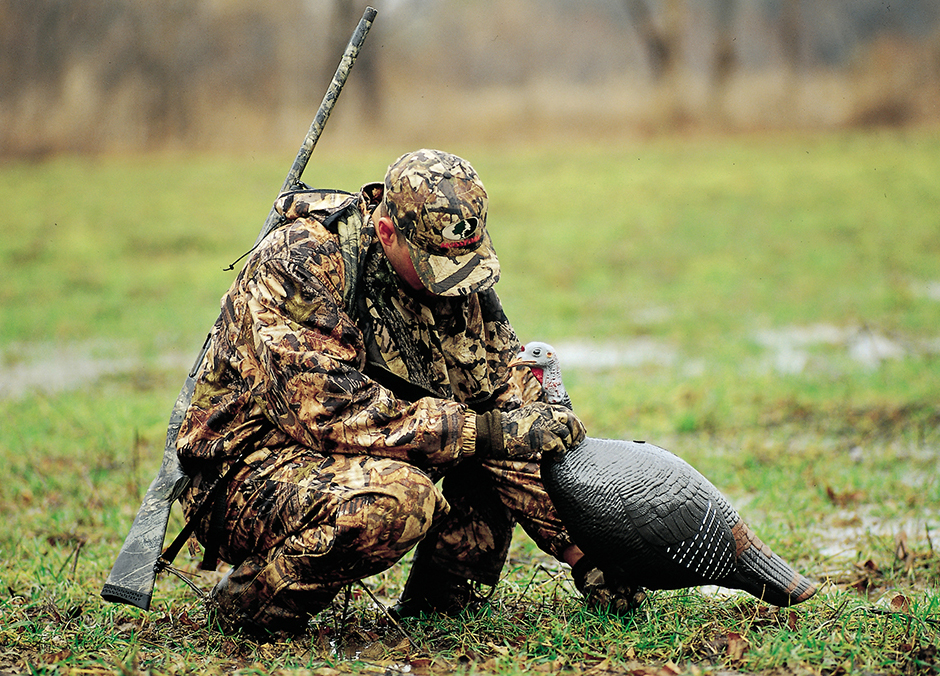The month of October is heaven on Earth for Maine wildfowl hunters, between upland birds and waterfowl there are seven gunning options. Depending on where a sportsman lives the feathered quarry include grouse, pheasant, woodcock, turkey, puddle ducks, geese and sea ducks. The most exciting addition to Aroostook’s autumn targets is wild turkey hunting in Zone 6, which has only been open a couple of years. Fall turkey season began on September 18 and runs clear through November 7, and one turkey of either sex may be taken.

Late season gobbler gunning is quite different from spring outings for a number of reasons, not really easier, but certainly requiring a different approach. Annual numbers of turkey hunters are increasing each year in Aroostook, but the wide selection of other bird and big game seasons and even late fall fishing draws a lot of attention and reduces turkey hunting pressure. Methodology also differs greatly; spring mating season capitalizes on decoys and calling to coax amorous Toms to be less cautious, but autumn outing offers no such advantage.
Sportsmen need to depend on prime feeding areas near roosts or the travel trails regularly used between roosts and feeding sites to set up an ambush location. A couple or three realistic, well positioned decoys and light calling will help, but scouting prime, consistently used fields and approach trails is crucial. Pinpointing roost tree locations is fairly simple, just quietly approach a suspected tree line or copse of woods at dusk and blow on owl or crow call. If turkey are in fact perched on limbs for the night, one or more will gobble in response. It’s a reflex action, the birds can’t help but call back even from 100 yards away if they hear an owl or crow.

(Contributed photo)
Two other pluses to our local Zone 6 hunt not available in the spring are more young birds from the spring hatch and the chance to shoot hens as well as Toms. Only the male turkey, referred to as bearded birds, can be harvested in spring to assure the hens lay lots of eggs and hatch large broods. This season, however, either sex and any age are fair game. All turkeys are very wary and a challenge to lure within shotgun range, but even though the yearling hens and Jakes are full size, they tend to be a bit less cautious.

(Contributed photo)
I mentioned how spring hunting centers on calling turkeys to decoys at fairly close range, allowing use of all shotgun gauges with certain bird shot and shell regulations. Fall shooting situations are often longer and hunters would be wise to use 12 or even 10 gauge shotguns with 3.5-inch shells and pellets of lead or non-toxic heavy metals and an extra tight choke. Extra full or one of dozens of very tight patterning chokes manufactured by numerous companies for long ranges of 50 or 60 yards would be a wise purchase.
Thick plumage and folded heavy-boned wings make body shots a poor choice, so aiming for the small head and neck area is the best target. Power, penetration and heavy pellets are the remedy; I prefer size 4 pellets when using lead and size 5 or 6 when shooting bismuth or Hevi-Shot. Colorful High-Vis fiber optic sights and compact, lightweight electronic red dot sights are very popular additions to turkey guns.
Full body coverage with camo clothing is essential if you’re sitting in field-edge brush, a makeshift trail-side blind or a commercial pop-up blind in a field. A face mask and gloves are crucial since these parts of the hunter’s body move about most often. All gobbler gunners should have an electronic call, especially novices to the sport. There are very realistic sounding, inexpensive models that will fit in a jacket pocket and might help coax a turkey just a bit closer.
More and more local sportsmen are getting hooked on wild turkey hunting and many others are making sure to bring along a second heavy gauge shotgun and appropriate shells when scouting or hunting deer, moose or other feather quarry. A surprising number of hunters spot gobblers while traveling back roads to scout for big game, ducks or geese or while out for upland birds. Some even get to sneak and peek their way into shooting range and bag Thanksgiving dinner.
There’s a lot of season remaining, so gear up and get out in zone 6 for Aroostook’s newest and largest game bird. Turkeys are a challenge and thrill to pursue, that’s why in many states they are considered a big game animal by Fish and Game Departments rather than upland or small game animal.








